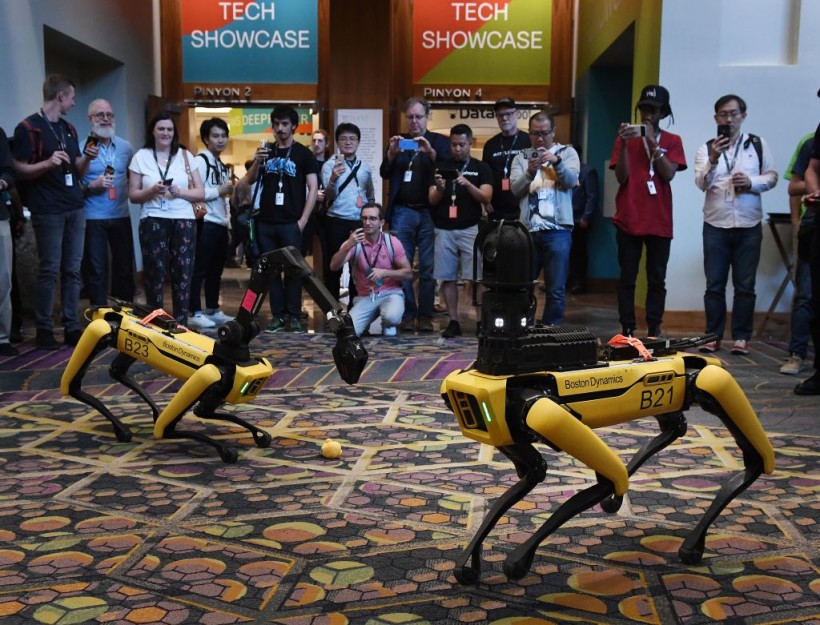The Department of Homeland Security officials recently tested 100-pound, four-legged headless robot dogs in Virginia and Texas, to eventually help secure the US-Mexico border.
According to a USA TODAY report, the "robot dogs" are four-legged headless machines attached with cameras and sensors. These may someday be "prowling along Southwest border," identifying undocumented migrants or even sniffing out illegal drug smugglers.
Officials are hoping to equip the robots which Philadelphia-based Ghost Robotics developed, with cameras and sensors to help Border Patrol agents in spotting illegal activity.
In a DHS press release, chief product officer of Ghost Robotics Gavin Kenneally said the mechanized model was developed to trek over the rough terrain encountered by agents along the border.
He described the new invention as a "rugged quadruped robot" traversing all-natural terrain types which include rocks, hills, and sands, as well as human-built environments such as stairs.
ALSO READ: This 3D Bionic Skin Can Convey Robots To Feel The Sensitivity Of Various Environment

Robotic dogs called Spot and built by Boston Dynamics are demonstrated during the Amazon.
Advocates Questioning the Use Of Headless Robot Dogs
Despite the potential of the headless robot dogs, civil rights and immigrant supporters cautioned that these inventions could invade civil liberties, booth border residents and asylum seekers. It is questioned if it was the most ideal use of federal funds while the United States immigration system stays in deep crisis.
According to the associate director of legal services for the National Immigrant Justice Center based in Chicago, Lisa Koop, nothing demonstrates a dehumanizing tactic to people migrating more clearly than the development of "robotic dogs to terrorize them."
She added that they are also questioning the government in spending the money to launch this technology, in contradiction to directing resources towards guaranteeing significant access to asylum at the border. These headless robot dogs are the most recent ongoing initiatives by DHS for the deployment of technology along its Southwest border.
Tested for Efficiency
The Science and Technology Directorate, DHS's research and development arm, had been devising robot dogs with Ghost Robotics for around two-and-a-half years, the security agency's press release specified.
They were initially tested in a Lorton, Virginia-based facility, where they were attached with video cameras and sensor packages.
According to a similar AZ Central report, the same robot dogs were used to transmit real-time video, as well as other data to monitors.
The robots were then moved to El Paso, Texas, where they were attached with cameras, as well as other equipment. These were tested by walking over rocks, up hills, and down ravines, all while they were carrying a payload that's about 20 pounds in weight. The dogs also performed sentry duty in the desert both during the day and night.
Kenneally said that the legs of the robot dogs can "feel" through its motors and can approximate friction forces and automatically right for "uneven and slippery ground."
Robots Designed Not to Interact with People
Researchers looked at basic field maintenance and repair, as well as battery life, not to mention, the ease of swapping out worn paw treads.
Lastly, the DHS release also indicated that the robot dogs, while undergoing testing in El Paso, walked through indoor facilities where they came across possibly aggressive individuals."
However, a spokesperson at the agency said the dogs are not developed or being tested to interact with migrants.
Report about the headless robot dogs is shown on The Damage Report's YouTube video below:
RELATED ARTICLE: Meet Cecilia the Robot Bartender, an Interactive AI Mixologist That Can Concoct 120 Cocktails Per Hour
Check out more news and information on Robotics in Science Times.














